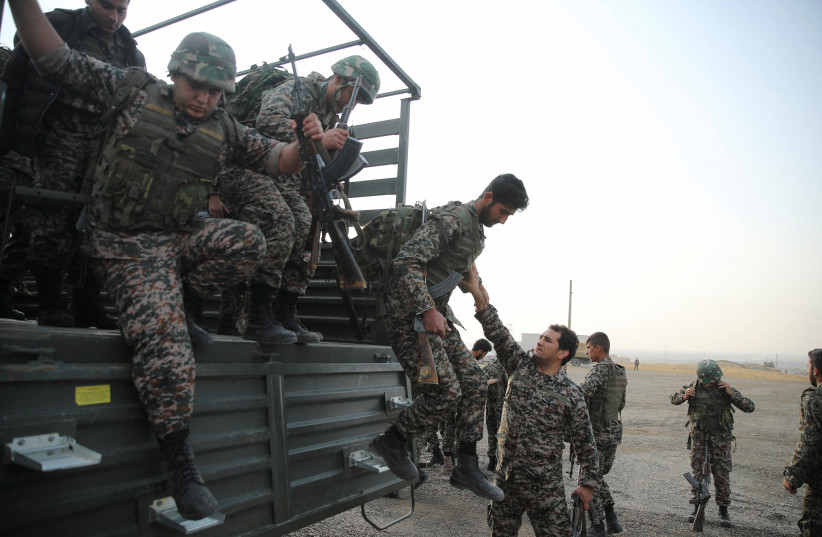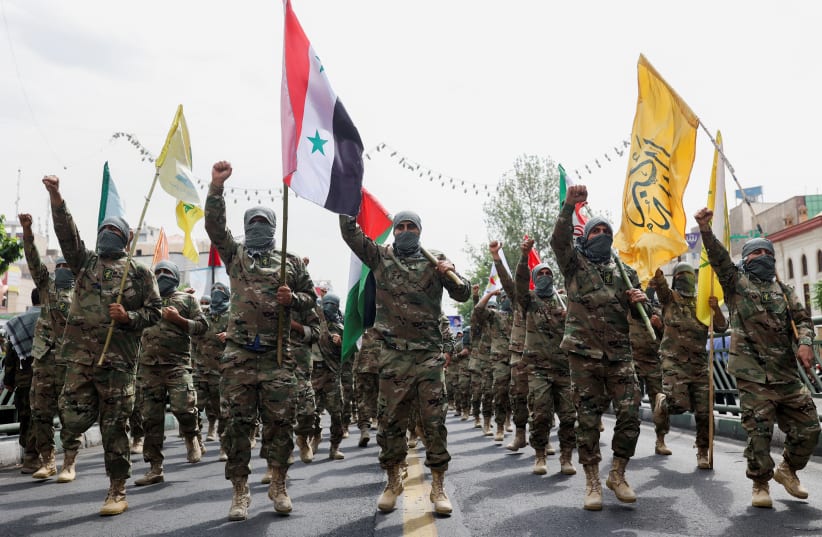The fate of an Iranian military attache to Lebanon who was a commander of the Islamic Revolutionary Guard Corps (IRGC) during the 1980s has been the subject of intrigue and mystery in the region for 41 years.
Ahmad Motevaselian disappeared in Lebanon in 1982 and for many decades Iran blamed Israel for his disappearance. However, reports at the time indicated that a Lebanese Christian armed group was involved in killing him and several other Iranians who were stopped at a checkpoint during the Lebanese civil war. Iran has long claimed Motevaselian was a diplomat and claimed he was protected by diplomatic protocols.
The head of the IRGC, Hossein Salami, reportedly revealed that Motevaselian was a “martyr” during a meeting with the man’s family during the Nowruz holiday on March 20 in Iran. This turn of events is interesting because Iran has often used this case to blame Israel for the 1982 incident. Now Iran appears to be shifting its narrative.
The new revelations from Iran and interest by regional media in Motevaselian's death are important because his role as an IRGC officer in the early 1980s mirrors Iran’s current role in Syria and Lebanon. Iran’s Islamic regime began its campaign to spread influence over Iraq, Syria and Lebanon in the early 1980s. It also began its focus on attacking Israel at that time. Therefore the story about the demise of Motevaselian is actually a story about what is happening today.
How has the story been reported?


Last year, Iran demanded the UN condemn Israel over the killing. “The Islamic Republic of Iran expects all rights organizations and the UN to take required measures by using appropriate mechanisms to force the Zionist regime into cooperating to the full in order to determine the fate of the dear diplomats,” the Iranian Foreign Ministry said.
The pro-regime Iranian Tehran Times claimed last year that “the four diplomats were abducted by the Israeli regime’s agents in Lebanon’s border with the Occupied Palestine.” At the time, Iran claimed that “forty years ago, in 1982, four Iranian diplomats named Seyyed Mohsen Mousavi, Ahmad Motevaselian, Kazem Akhavan and Taghi Rastegar Moghaddam were kidnapped by the mercenaries of the Zionist regime in an area in Lebanon that was under the Israeli occupation back then.”
The importance of Ahmad Motevaselian
Motevaselian was the most important Iranian figure in the group. His cover was as a military attache, but he was also an IRGC member and a commander whom Iran had sent to Syria and Lebanon to organize fighters against Israel. The other men in the vehicle included an embassy employee, the charge de’affaires of Iran and an IRNA journalist.
Motevaselian had been commander of the 27th Mohammad Rasoul-Allah brigade and played a role in the battle of Khorramshahr. He was believed to be the IRGC expeditionary forces commander in Lebanon, a key link to Hezbollah at the time.The car he was driving in was stopped on July 5, 1982 by the Phalange, the armed wing of the Kataeb party in Lebanon, a key Christian group. These later became part of the Lebanese Forces. Iran has said over the years that “the Islamic Republic of Iran always holds the Zionist regime and its backers responsible politically and legally for the kidnapping and for that act of terrorism.”
Now, Iran seems to have changed its tune. While the Foreign Ministry of Iran has blamed Israel over the years, claiming not to know the officer's fate, it appears the IRGC has known that their officer was dead for years. Salami reportedly told the family that his death is confirmed and that he was “the first Iranian martyr for the liberation of Jerusalem, and that the conquests of the axis of resistance today are the fruit of the path that the martyr Motevaselian started, to liberate Jerusalem and liberate the oppressed people of Palestine, from the yoke of domination and oppression of the Zionist occupation and its support.”
What really happened?
According to an article in Al-Ain media in the Gulf, the real story of the killing is more complex. According to that report, Motevaselian was killed in 1982 and buried in a construction site in Beirut. It turns out that in 2019, not long before he, too, was killed, IRGC Quds Force commander Qasem Soleimani revealed that Motevaselian was killed the same night he was detained in Lebanon.
Later, Iran apparently obtained bones from a source that claimed they had found Motevaselian’s body. The report says that these bones didn’t actually match the man, but Iran assumed he was dead. Iran didn’t change its official claims though. It continued to bash Israel every year on the anniversary of the supposed “kidnapping.” Now the IRGC has finally admitted he is dead.
The story of Ahmad Motevaselian
Motevaselian was born in 1954 in southern Tehran. He completed his studies in the 1970s and completed military service in an Iranian tank unit. He was detained by the secret police of the Shah for political activities. After the 1979 revolution, he took part in operations against Kurdish opposition forces in Sanandaj. He was then sent to Syria with an IRGC unit before briefly returning to help fight the Iraqis in the Iran-Iraq war.
According to the online website Al-Khanadeq, Motevaselian met with Ayatollah Khomeini, and was sent to Lebanon. At the time Lebanon was in a major civil war and Shi’ite groups were generally sidelined. Israel invaded Lebanon in 1982 to neutralize Palestinian terror groups, and Iran sent Motevaselian “to southern Lebanon, to help the Lebanese people in the fight against Israel, but their mission was changed to become assisting and training the Lebanese in order to establish an armed resistance.” This is important because when Israel first entered Lebanon it was generally greeted positively in southern Lebanon among the Shi’ites who live there. Iran’s goal was to radicalize and hijack this community and turn them into a front against Israel. From there the seeds of Hezbollah grew. Motevaselian was sent to work for the Iranian embassy in Lebanon as cover for his real IRGC activities. According to this report, a statue was later erected in Maroun al-Ras Park in 2015, “showing him pointing his finger at occupied Palestine.”
In 2005 Al-Jazeer reported that “Iran had been watching the developments in Lebanon since Lebanese President Emile Lahoud signed an amnesty on Tuesday pardoning Geagea. Tehran claims Geagea and his Christian Lebanese Forces militia kidnapped the diplomats and delivered them to Israel.” Iran threatened to sure Geagea at the time. Iran continued year after year to accuse Israel of holding the Iranians and reports appeared in 2008, 2016 and 2018 regarding these claims.
At the same time, Hezbollah has claimed the Lebanese Forces group knows the whereabouts of the missing Iranians. Hezbollah leader Hassan Nasrallah said in 2009 that the “Lebanese Forces group now headed by Samir Geagea is responsible for the fate of four Iranian diplomats who disappeared in Lebanon on July 4, 1982.” According to Nasrallah “the Lebanese Forces group is the only source that can confirm whether the Iranian diplomats have been killed by the group or handed over to Israel,” Nasrallah pointed out.
The news about the real fate of the IRGC officer is important. Iran’s IRGC is portraying him as the “first martyr for the liberation of Jerusalem.” This means Iran is connecting his death to the current losses of IRGC in Syria. This also has an impact on Lebanese politics because Hezbollah, an ally of Iran, continues to use it against Christian political politicians in Lebanon.
